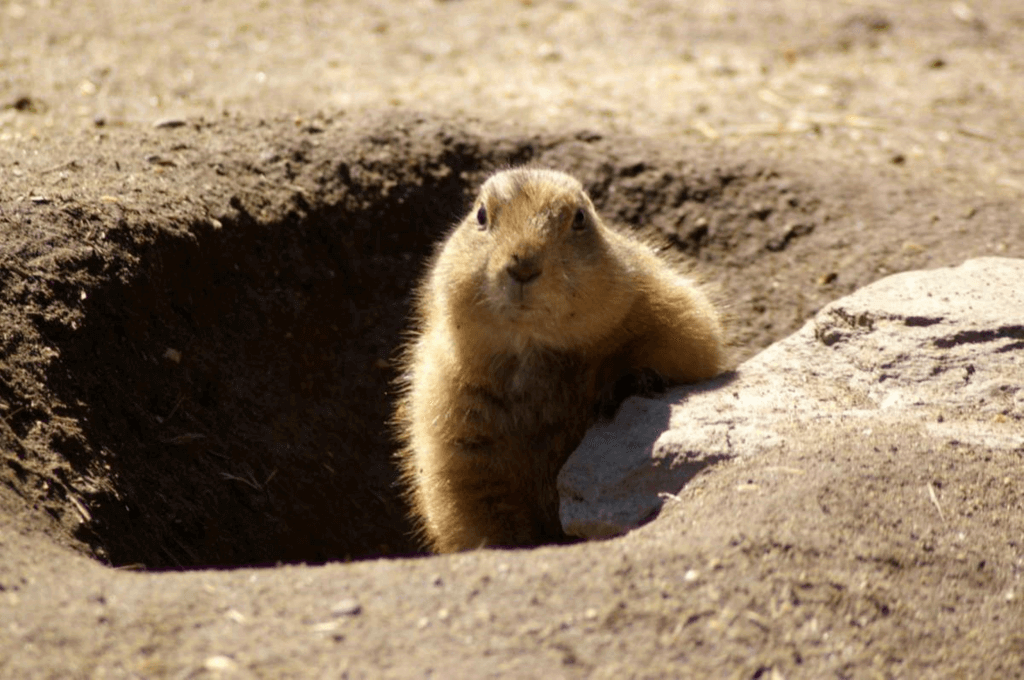Groundhog Day
Groundhog Day is observed next on Sunday, February 2nd, 2025 (264 days from today).

Groundhog Day is annually observed on February 2 in the United States.
History of Groundhog Day
The concept of Groundhog Day originated in Germany. The Germans used a groundhog to "predict" the weather on Candle Day, a Christian holiday celebrated on February 2 every year. The Germans who immigrated to Pennsylvania brought their traditions with them, but - lacking a hedgehog - used a ground hedgehog instead. Pests abound in Pennsylvania, much to the annoyance of farmers, who consider them a nuisance.
The History Channel says that the first mention of Ground Spider Day, historians can be dated to an 1887 newspaper in which an editor, who belonged to the "Punxsutawney Ground Hedgehog Club," wrote that Phil, the Punxsutawney hedgehog, is America's only true weather porcupine. .
Love the movie? Me too. But sadly none of Bill Murray's movies were actually shot in Punxsutawney, although it certainly captures the look and feel of the town of 5,900 people and Gobbler's Knob.
Why the Groundhog?
Groundhog are completely unrelated to hog, so their compound name is only partially accurate because they live so close to the ground.
The other common name for these marmots — woodchuck — is equally confusing. Woodchucks don't chew or throw around the wood, though common tongue reasons wonder how much they would be if they could. As burrowing rodents, they have little to do with wood or trees. In fact, the name woodchuck is a reconstruction of a borrowing from an Algonquian language of Southern New England, such as Narragansett's ockqutchaun.
So the word woodchuck has nothing to do with cutting any wood. It was the English-speaking colonists who seemed to have shaped the unfamiliar native term to look and sound like something more familiar to them, creating a wooden knock.
And, the name Punxsutawney also seems to be derived from a Native American name. In Unami (a Lenape language), Punkwsutènay translates to "town of fireflies" or "town of mosquitoes". You have to admit, Groundhog Day is a better way for the local chamber of commerce to market the town than the “Mosquito Capital of Pennsylvania.”
Since a groundhog (or warbler or "swallow pig") hibernates during the winter, getting out of the ground is a natural sign of spring. In Europe centuries ago, people viewed other hibernating animals, including badgers, bears and porcupines, as signs of the end of winter. German immigrants to Pennsylvania in the mid-1800s began to keep an eye on the ground rat. The common population of rodents makes it a useful agent for this particular weather superstition.
And it is a superstition. But here's the truth: the winter days when you can see yourself clearly are often especially cold because there are no clouds overhead to insulate the earth.
Why is it called Groundhog Day?
It's really simple… holidays traditionally celebrate only one creature, not more than one (i.e., plural background creatures). And, that groundhog is Punxsutawney Phil, said to be named after King Philip. In Punxsutawney town, Phil will be woken up from his winter hibernation in the wee hours of February 2. If he doesn't see his shadow when he pops out of his burrow, break out Coppertone. If he does - break the fine salt for the driveway.
The official Groundhog Day website says there is a connection between the event and an event known as Candlemas, or Candle Day, and this old English song: If Candlemas be fair and morning, Come, Winter, have another flight ; If Candlemas bring clouds and rain, Go Winter, and not come again. According to the official website, “The celebration begins in Christianity as the day, (February 2), when Christians bring candles to the church to be blessed. They feel this will bring blessings to their family for the rest of the winter. "
Fun fact: The first Groundhog Day appeared in an American newspaper in 1886, and the first appearance of the varmint occurred a year later at the Gobbler's Knob in Punxsutawney in 1887.
What do you do for Groundhog Day?
Groundhog Day is a popular holiday in many parts of the United States. Although its adoption in some cases, the official ground dog, Punxsutawney Phil, lives at Gobbler's Knob near Punxsutawney, Pennsylvania. The town has attracted thousands of visitors over the years to experience the various Groundhog Day events and activities on February 2.
The Punxsutawney Groundhog Club plays an important role in celebrating Groundhog Day in the town. Club members, news reporters, locals and visitors meet at Gobbler's Knob every February 2nd to await Phil's arrival and his weather predictions. The governor of Pennsylvania has been known to attend Groundhog Day ceremonies. Many weather researchers question the accuracy of the ground urchin in predicting the weather, but some aficionados of the ground urchin may disagree.
Observed
Groundhog Day has been observed annually on February 2nd.Dates
Thursday, February 2nd, 2023
Friday, February 2nd, 2024
Sunday, February 2nd, 2025
Monday, February 2nd, 2026
Tuesday, February 2nd, 2027


